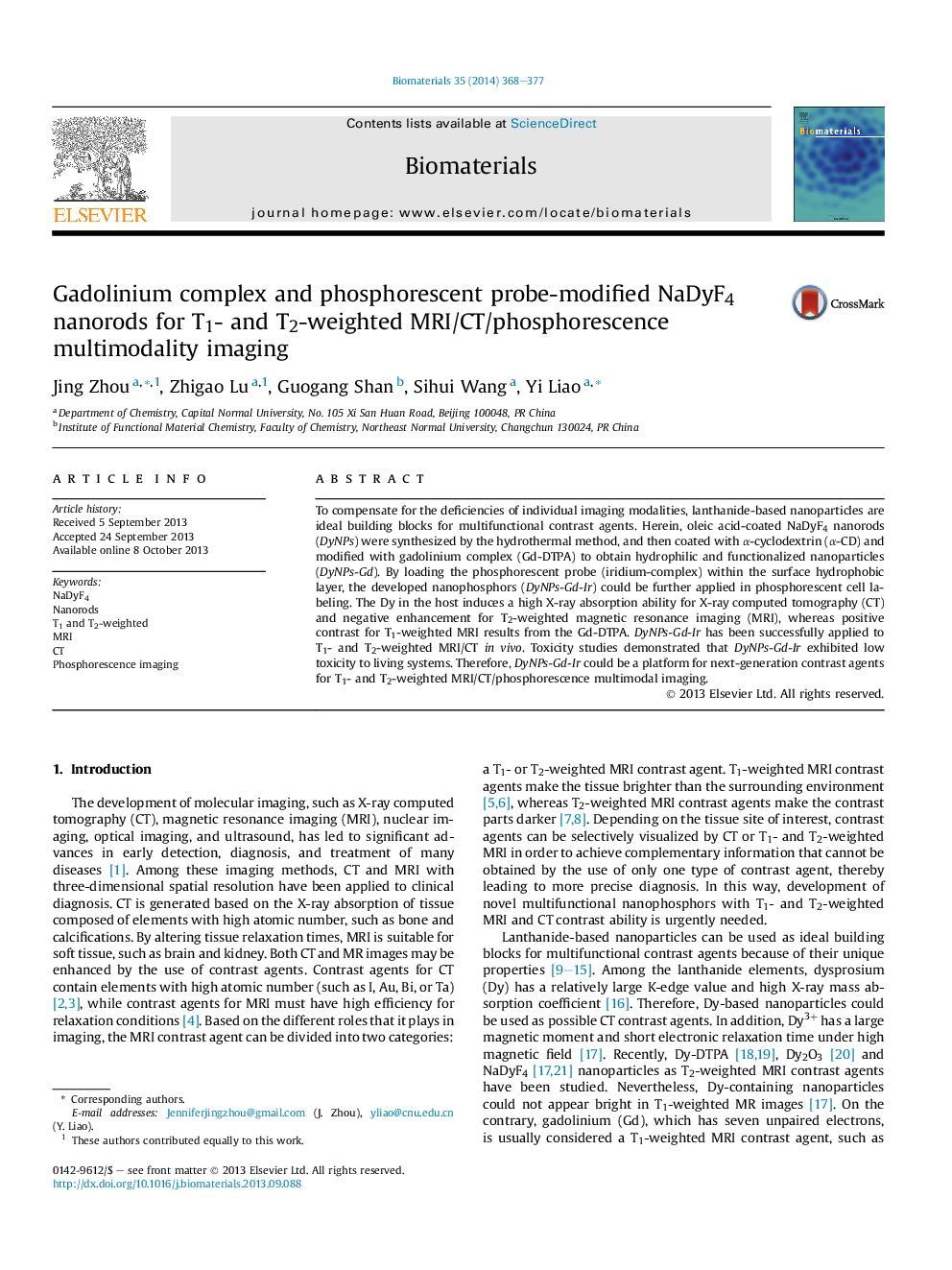| Article ID | Journal | Published Year | Pages | File Type |
|---|---|---|---|---|
| 6226 | Biomaterials | 2014 | 10 Pages |
To compensate for the deficiencies of individual imaging modalities, lanthanide-based nanoparticles are ideal building blocks for multifunctional contrast agents. Herein, oleic acid-coated NaDyF4 nanorods (DyNPs) were synthesized by the hydrothermal method, and then coated with α-cyclodextrin (α-CD) and modified with gadolinium complex (Gd-DTPA) to obtain hydrophilic and functionalized nanoparticles (DyNPs-Gd). By loading the phosphorescent probe (iridium-complex) within the surface hydrophobic layer, the developed nanophosphors (DyNPs-Gd-Ir) could be further applied in phosphorescent cell labeling. The Dy in the host induces a high X-ray absorption ability for X-ray computed tomography (CT) and negative enhancement for T2-weighted magnetic resonance imaging (MRI), whereas positive contrast for T1-weighted MRI results from the Gd-DTPA. DyNPs-Gd-Ir has been successfully applied to T1- and T2-weighted MRI/CT in vivo. Toxicity studies demonstrated that DyNPs-Gd-Ir exhibited low toxicity to living systems. Therefore, DyNPs-Gd-Ir could be a platform for next-generation contrast agents for T1- and T2-weighted MRI/CT/phosphorescence multimodal imaging.
